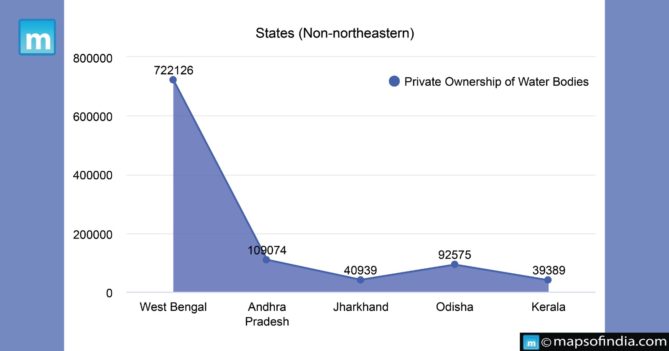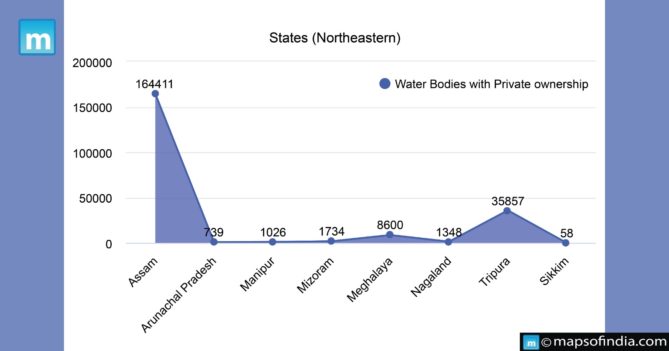The Ministry of Jal Shakti, under the guidance of Cabinet Minister Gajendra Singh Shekhawat, conducted its first-ever water bodies census and released a report on the same. The report provides detailed information and data, marking out a succinct analysis of the water bodies in the country. From providing insightful learning on rural-urban disparity, the census offers comprehensive intel on all water bodies in the country.
Waterbody census
The water body census is a collection of relevant databases of water bodies providing precise information about ponds, tanks, lakes, and reservoirs in India. Oceans, lagoons, rivers, streams, springs, waterfalls, canals, and swimming pools are some water bodies excluded from the census.
Private Ownership of Water Bodies in Northeastern Territory
According to the census, Assam, one of the seven sisters, was on the list of top five States in terms of water bodies, and it was also amongst the top 5 leading States with privately owned water bodies.

| States (Northeastern) | Water Bodies with Private ownership |
| Assam | 1,64,411 |
| Arunachal Pradesh | 739 |
| Manipur | 1,026 |
| Mizoram | 1,734 |
| Meghalaya | 8,600 |
| Nagaland | 1,348 |
| Tripura | 35,857 |
| Sikkim | 58 |
| States (Non-northeastern) | Private Ownership of Water Bodies |
| West Bengal | 7,22,126 |
| Andhra Pradesh | 1,09,074 |
| Jharkhand | 40,939 |
| Odisha | 92,575 |
| Kerala | 39,389 |
Most of the northeastern states have a considerable percentage of water resources that are privately owned. According to the report, the maximum of all these privately owned water bodies belongs to individual owners, farmers, or a group of individuals and other private bodies. Most ‘in use’ water bodies are reportedly used in pisciculture, followed by Irrigation.

The privatized water resources in the State of Arunachal Pradesh is 739, accounting for 74.42%, the lowest amongst all Northeastern states. On the other hand, Assam holds 1,64,411 privately owned water resources, accounting for 95.3%, reflecting a dominance of private ownership. 90.2% of the “in use” water bodies are used for pisciculture.
In Manipur, privately owned water bodies are 1026, making for 61.9%, seemingly higher than the public-owned water resources, which account for only 38.1%, again a reflection of the dominance of private entities. A good proportion of these, around 74.0% of water bodies, belong to a group of individual farmers. The Meghalayan also has larger privately owned water bodies, i.e. 8,600, accounting for 64.5%, which is twice more than public ownership, 35.5%.
Also Read:
First Census Report: List Of Water Bodies In Rural Areas Across India
In Mizoram, out of all water bodies, 79.4%, which is 1,734, is privately owned, mostly belonging to individual farmers, whereas only 20.6%, i.e. 451, is owned by public entities. A similar private-public disparity is reflected in the state of Nagaland. Privately owned water bodies in the state account for 94.13%, i.e. 1,348, while only making up 5.87%, i.e. 84, under public ownership.
The gulf is even wider in Tripura with 98.9%, which is 35,857, under private ownership, of which 99.7% is owned by individual farmers, whereas the publicly owned is as low as 1.1%, i.e. 382. Sikkim is one exception where publicly owned, which is 43.3%, higher than the privately owned water bodies, which account for 56.7%.




